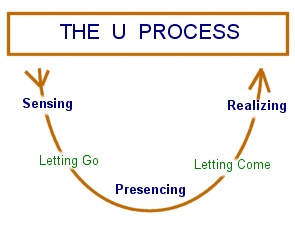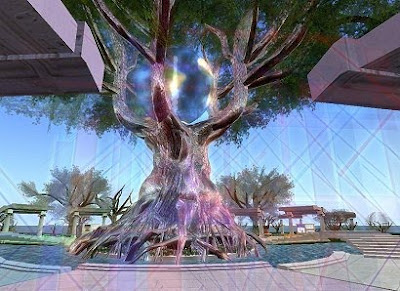2011 will be the first year in 15 that I haven't had an office on campus. I'll have a desk in a shared space at the Campbell St Campus. With much disciplined sorting my previous office has been reduced to 4 garbage bins, 2 recycle bins and 4 boxes that now sit at home. This move has firmly established what has been developing for some time - my
'knowmadic existence' as described in 2008 by John Moravec.

This mobility has been made possible through the advent of powerful handheld computing and fast 3G wireless broadband. It has also been supported through flexible workplace policies that recognise the demise of the 9-5 (8-4) five-day working week and the potential for increased productivity and lifestyle choices that this can bring.
My physical location is now determined by project work, classes, meetings and the need to use specialist resources or spaces - and usually changes every few hours. My 'office' (defined as the place you are likely to find me) has become my
online presence.
For my '
knowmadic work' to be effective and efficient I have to net-work across many locations - both physical and online. My physical workplaces include staff rooms, campus libraries, meeting rooms, cafes, home and even the car when travelling around the state.
When I go to a workplace I usually pick one of several bags depending on anticipated tasks:
- light bag with current papers, iPhone and netbook or tablet computer (eeePC or iPad), and various USB memory sticks with portable apps
- laptop bag with current papers, HD camera, various USB broadband devices with router/switch (to set up a local internet enabled networks for up to 6 mobile devices)
- AV bag with various digital recorders and cables
My online work environment includes a Polytechnic staff intranet and global professional learning network (PLN); educational resources, environments and applications; working and archived documents. I was recently able to throw away most of my papers because everything is safely archived online.
An excellent ICT infrastructure across all campuses gives me consistent firewalled access to institutional communications, applications and documents. Much of this is accessible off-campus through a web browser.
An equally excellent :-) home wired and wireless network gives me firewalled access to range of shared resources including several Tbytes of storage. These resources are complemented by a growing range of cloud computing services providing communications, servers, applications and storage - shared and private.
Ubiquitous access to files, resources, people and systems is provided through a range of services that work across devices (iPhone, iPad, EeePC, laptop, desktop) such as:
- DropBox
- Google Docs, WikiSpaces
- Evernote, Delicious, Flickr, YouTube, Vimeo, AuthorStream, and several more...
- LogMeIn, LastPass
- Skype, Google Talk
- GMail, work email
Informal chat now happens just as much online as face-to-face through:
- Twitter, Office Communicator (and hopefully iDialog one day), Facebook
- Google Reader, Blogger
- Online events in virtual spaces including Second Life/OpenSim
Online communication connects me across learning areas, campuses, educational sectors, state and international boundaries... I'm just as likely to chat and even collaborate with someone from another institution or country as I am with a local colleague.
It also disconnects me from those who are not comfortably online unless I make time for walking and talking. On the other hand I'm finding formal face-to-face meetings with both staff and students tend to be more focused and purposeful.
I wouldn't go as far as to describe myself as a nomad but perhaps it's another role to add to
Stephen Downes list of educator roles :-)












